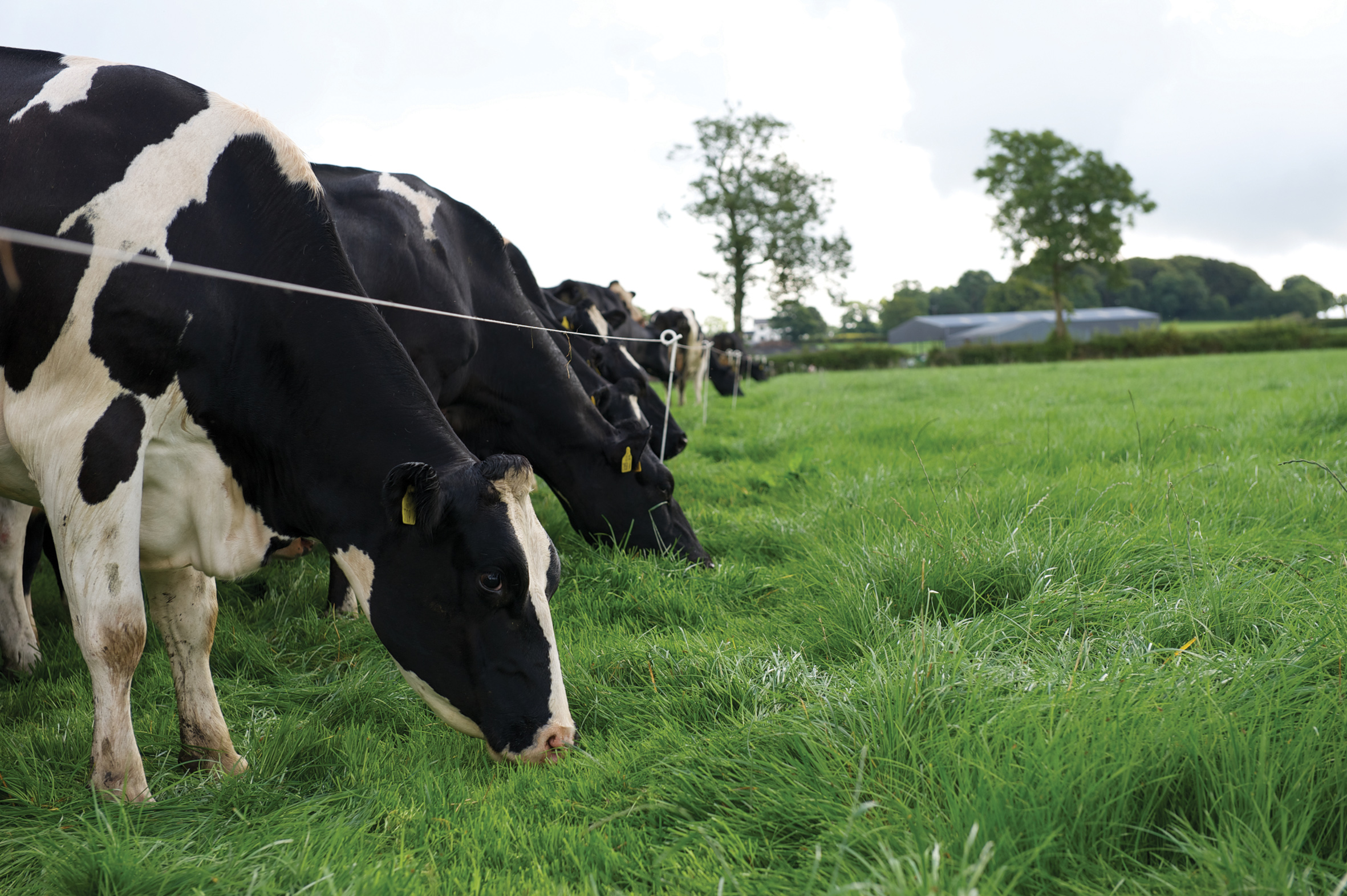Managing cows at turnout to ensure a smooth transition and avoid drops in performance, milk yield, constituents and fertility, is crucial. It generally takes approximately three weeks for the bugs in the rumen to adapt to significant diet changes so manage the change to grazing gradually.
On/off grazing
-
Even a few hours on/off grazing, when conditions allow, means cows get used to grass.
-
Weather and ground conditions permitting, cows should be able to consume 5kg DM in three hours.
-
Buffer feed with a high D-value grass and/or maize silage, fed alongside a parlour compound.
Full turnout
As weather and ground conditions improve, and the proportion of the grass in the diet increases, you need to feed a compound that is balanced relative to what your grass is supplying, in order to avoid a drop in performance.
Highly digestible grazed grass is rapidly fermented. This means rumen pH of cows grazing highly digestible pasture can remain below pH 6.0 for more than 50% of the day. Grass can also be high in crude protein, and have low NDF (stem), as well as potentially high or variable sugars.
What to look for in a feed at grass:
- 14%-16% crude protein
- High in digestible fibre, for example sugar beet pulp/soya hulls
- Balanced source of cereals, maize and barley
- Source of UDP/bypass protein
- Minerals and vitamins that grass is low or deficient in, especially magnesium
Actisaf live yeast in the cows’ ration reduces set backs in performance at turnout by helping the bugs in the rumen adjust to grazed grass in the diet and improving rumen function.
Actisaf live yeast will reduce the risk of sub-acute ruminal acidosis throughout the grazing period. It should be included at a rate of 1kg of Actisaf/tonne for a grazing compound, assuming a feed rate of 4-6kg/head/day.

